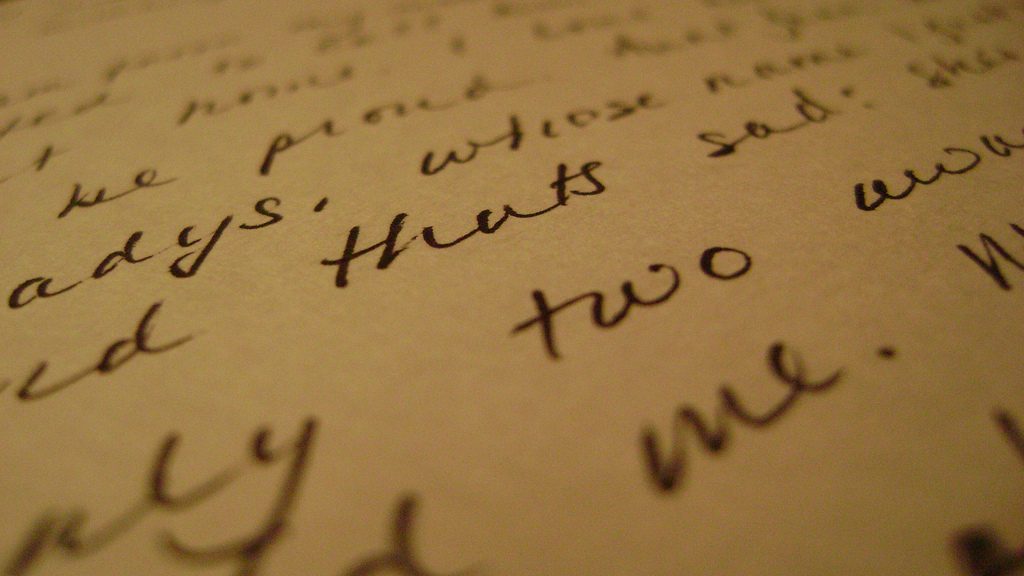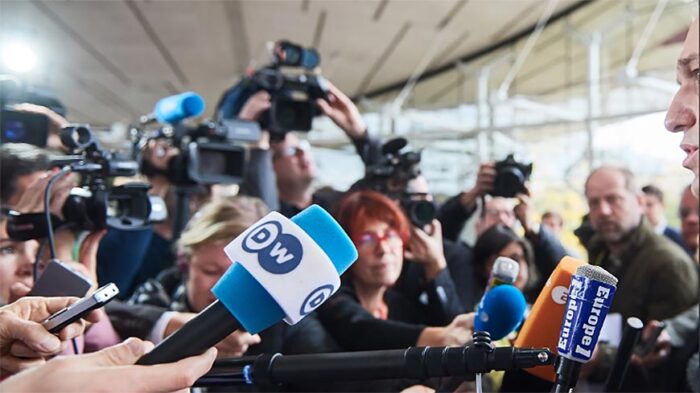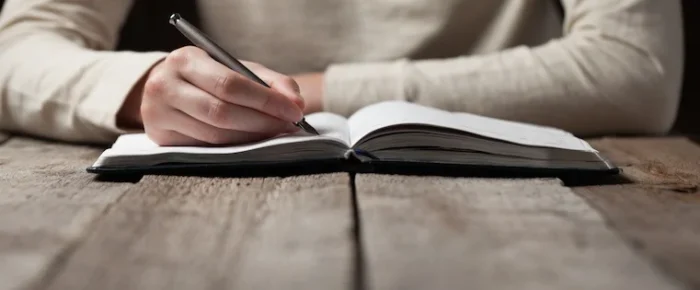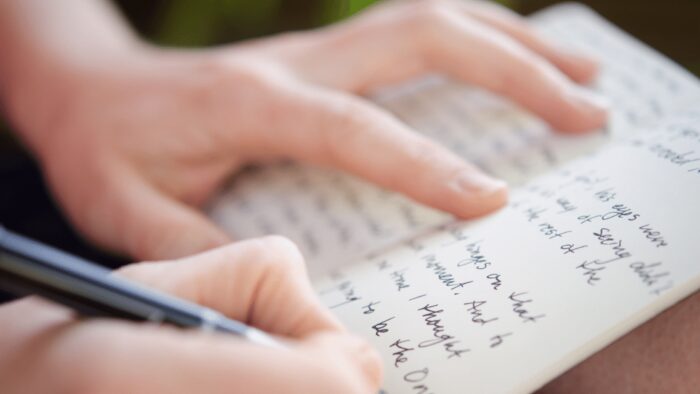
Freewriting is an aid to improving your life. Let’s understand what it is and what it takes.
Freewriting. What is it?
In simple terms, freewriting is a writing technique that helps improve a person’s life. It is a kind of brainstorming that allows finding interesting solutions, generating fresh ideas, and getting rid of fears. Freewriting is believed to help free your head from thoughts before going to sleep, which allows you to fall asleep faster and sort yourself out.
The main rule of freewriting is to write quickly for 10-15 minutes without stopping, checking mistakes, or editing. The text must be written as it is written as if from the subconscious, allowing you to develop thinking.
Some people even make a successful living from the freewriting technique of writing articles or other texts. It’s something like rewriting or copywriting.
The very notion of “freewriting” was invented by Kenneth Macrory.
Back in 1934, Dorothea Brand wrote a book called How to Become a Writer, which has become a classic guide for aspiring writers. The writer advised writing very quickly every morning for 30 minutes. And in 1981, Peter Elbow wrote the book “Writing With Power” about the freewriting technique after several years of creative crisis.
In some countries of Europe, this technique became known only by 2011. This happened thanks to the book by Mark Levy, “Freewriting. A modern technique of search for creative solutions” or “Genius on demand.”
Who is freewriting suitable for?
Generally speaking, freewriting can be suitable for everyone in ordinary life to put a strain on the brain and then free it from thoughts. This technique is especially suitable for those who are associated with writing.
Journalists

Conduct a sort of interview on paper, and write down questions to ask.
Copywriters
When, for example, a difficult or boring topic comes up, and there are no ideas for writing it.
Writers
To overcome the fear of clean writing or lack of ideas, you just need to start writing your thoughts with freewriting methods. That’s how new creations are born.
Marketers
This method should be used when there is a lack of ideas to help in their search.
Bloggers
For example, when writing posts. Or you can use Levy’s technique of “Get the Good Out of a Business Book” to find ideas or write a review of a book you’ve read.
What do you need for freelancing in general?
The best tools are:
- A piece of paper;
- pen;
- a timer.
And for those who don’t like to write by hand, there are many programs on your computer or phone. Probably the most famous computer program is Microsoft Word. You can use the simplest notes and timer on your phone or say special programs (e.g., Writelight, Write or Die, Stenosaur). You can open https://www.calmlywriter.com/online/ and just type on a blank sheet of paper.
In his book “Genius on Demand,” Mark Levy described 6 secrets and 15 effective freewriting techniques. Let’s talk about them briefly.
The 6 secrets of freewriting

- Do not exert too much effort.
- Write fast and without interruption.
- Work to a tight timeline.
- Write the way you think.
- Develop the thought.
- Refocus your attention.
15 Effective Freewriting Techniques
It contains thinking techniques that help with freewriting.
1. An idea as a product. Describe the situation in 5 minutes, then set the sheet aside. After that, take another 5 minutes to complete the details.
2. Give thought prompts. Allows you to “stretch” your head with a guide to a specific topic or thought. This can also be a direction that is unexpected to you. For example, a tip-off of “I love…” and a 10-minute brainstorm for our thinking.
3. Distance yourself from your intellect. You can confuse yourself by resolving the situation in your head. Describe the problem on paper for 10 minutes. The text should contain opinions, specific actions, and facts connected logically.
4. How important it is to disconnect from your thoughts. When using the freewriting technique, do not fixate only on a particular thought, but write down all the things that come to mind. There may be something larger in one of them.
5. Use assumptions to break a deadlock. Think of an unsolvable situation, a problem that leads to an impasse. During 10 minutes of freewriting, your brain considers ways to get away from thinking barriers.
6. Finding a hundred ideas is easier than finding one. And it’s true that when we try to find the one best idea, the brain gives us lots of them. If you write down all your ideas for 2 days, you can find that one idea or find a way to solve some problem.

7. Rethink the meaning of familiar words. For example, choose 5 words from your professional field and describe them for 5 minutes.
8. Learn to love the untruth. If you need to change the way you look at certain things, this method will help you lie to yourself. Write down and tell an untruth about something, and then consider all the consequences of that untruth on paper. In the process of writing, you may come up with an interesting solution.
9. Have a conversation on paper. This method is great for journalists. Using a piece of paper, determine the topic of the conversation and the questions you want to ask. Ten minutes will be enough time for new ideas.
10. Writer’s marathon. Particularly relevant for those who work with texts or just like to write. Freewriting allows you to move away from your usual way of thinking and develop a new direction. Writing should be a single session of 2-3 hours, or maybe five parts, like 20 each. To do this, it’s great to start writing in the morning.
11. Spill your mind out onto the paper. Unusual ideas, and points of view, combine the incongruous for 10-20 minutes. This technique is great before going to sleep in order to free the head from thoughts.
12. Doubt yourself. For 10 minutes, describe the facts that exhaust you physically and mentally in a situation.
13. Don’t stray from the topic. Describe the problematic situation from two sides: pleasant and not so pleasant.
14. Benefit from the business book. Select ideas from the book you read and describe them.
15. How you think is how you live your life. You can hear a lot of interesting things about thinking lately. With a 20-minute freewriting activity, you can work through improving your thinking. Imagine anything that will help improve your life and describe it.
Freewriting is not…

1. Morning Pages – consists of getting up in the morning and immediately writing 3 pages of handwritten text with no time limit. This method is developed and described in the book The Artist’s Way.
2. Automatic writing is unconscious writing, which reminds one of something hypnotic or mystical. During freewriting, the person is fully conscious.
3. Mental maps or mind maps are something like a logical scheme where there is a connection between its elements. They can be created on a computer or by hand. They were developed in the late sixties of the twentieth century by psychologist Tony Busen. This method does not refer to freewriting because logic is not the main part of it.
4. Cubing – is that each problem is multifaceted and has 6 sides: description, comparison, association, analysis, use, and evaluation. The distinguishing feature is that there is no time limit.
5. Brainstorming is conducted among several people who generate ideas, write them down, and discuss them—the method described in 1942 by advertising man Alex Osborne. But, unfortunately, it’s not freewriting.
6. Six Hats of Thinking – The method is similar to cubing in that the problem is also viewed from 6 points of view, each responsible for solving a particular problem from that particular angle. Six different colored hats are responsible for facts, feelings, control, creativity, positivity, and negativity. The methodology was developed by the psychologist Edward de Bono. It is quite difficult to prepare, as it still needs to be figured out. This is what makes it different from freewriting.
Freewriting is not when I write my essay for free, it is a separate method, which cannot be replaced by another but can be perfectly combined and supplemented, as described above. And now, put aside all your business for 10 minutes, try an interesting freewriting technique, and develop your thinking.














